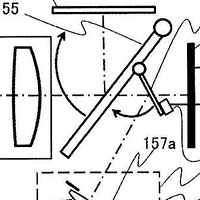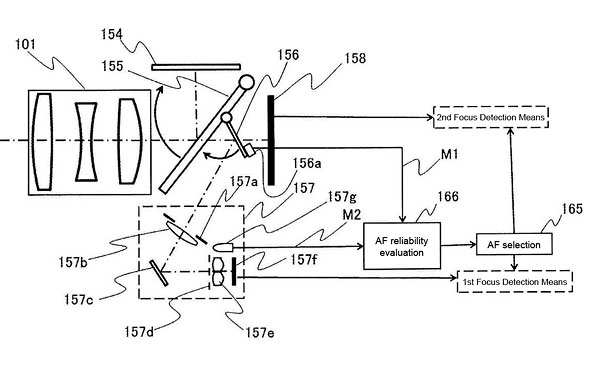Canon patents faster focusing technique for burst shooting with DSLR cameras
posted Tuesday, August 12, 2014 at 4:31 PM EST

In the last couple of years, affordable mirrorless cameras have well and truly demolished even the most expensive of DSLRs in terms of burst-shooting performance. Leveraging their lack of a cumbersome mirror-flipping mechanism and the advent of on-chip phase detection, mirrorless cameras can now shoot far faster than any DSLR, and for far less money.
What's a DSLR maker to do? Well, if you're Canon you look at ways that you can resolve that imbalance in the DSLR's favor. The company has filed a patent application in Japan -- spotted by always-on-the-ball tech blog Egami -- that aims to couple the benefits of an SLR design with that of a mirrorless camera.
Their solution? Use the DSLR's dedicated phase-detection autofocus sensor while framing through the viewfinder, but as soon as burst shooting starts, let on-chip phase-detection pixels do the work. The technique means you still get the benefit of an optical, thru-the-lens viewfinder image when first framing, and can focus during framing without lifting the mirror to expose the image sensor, but you needn't then drop the mirror between frames.

(Image from patent application. Approximate English-language translations by Imaging Resource.)
All of which leaves only one question in our mind: How do you continue to frame your image burst while the mirror is raised to allow shooting and focusing with the sensor? Presumably, you'd need some form of hybrid electronic / optical viewfinder, but as far as we can see the patent application doesn't discuss framing during capture. We can't really see how else it could work, though. If you were framing using the LCD or an electronic viewfinder to start off with, there would be no real advantage over using a mirrorless camera in the first place, after all.
Of course, as with any patent application there's no guarantee this will be granted, nor that Canon will use the patent in a commercial product should it receive a patent. It's an interesting concept, though, and we're curious to see what new tech it could lead to. One thing that immediately occurs to us is the possibility of a feedback loop that allows the camera itself to correct for front- or back-focusing with an attached lens, saving the photographer the hassle of manually calibrating lenses using microfocus adjustment.
(via Canon Watch)